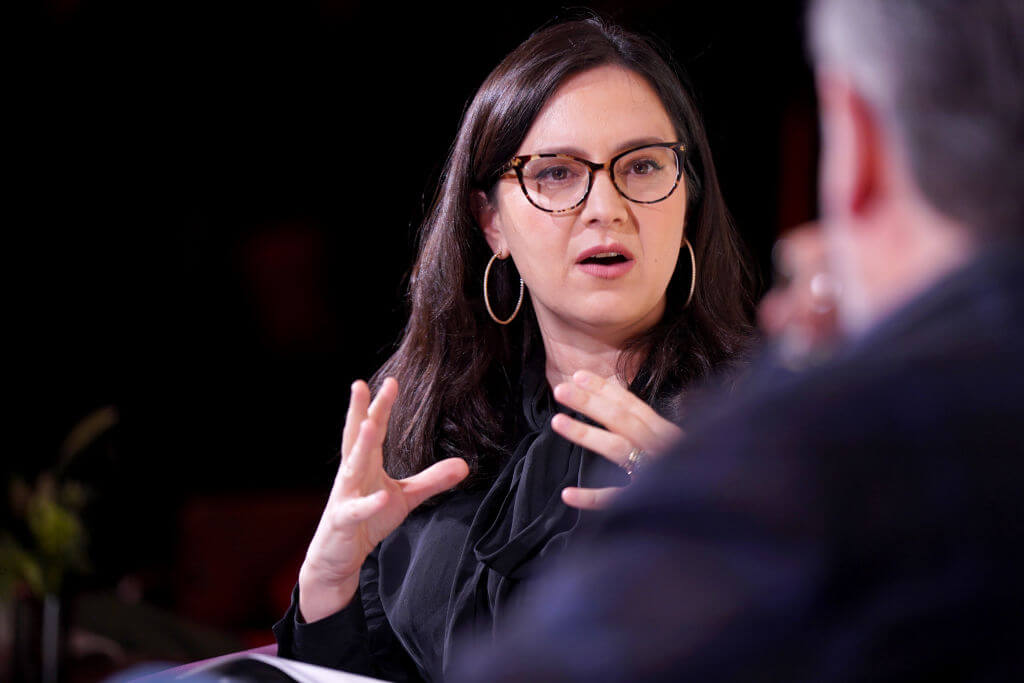Taste Testing ‘Yogurt Culture’ for Shavuot

Graphic by Angelie Zaslavsky
This is an occasional column in which the writer evaluates a cookbook by making some of its recipes, sharing the dishes with friends and asking her guests what they think of the results. For Shavuot, she cooked her way through “Yogurt Culture: A Global Look at How to Make, Bake, Sip, and Chill the World’s Creamiest, Healthiest Food” by food blogger Cheryl Sternman Rule.
The Recipes
- Cold Yogurt Soup With Cucumber, Herbs and Rose Petals
“A whole cookbook on yogurt?” one may wonder. In fact, when her agent first suggested she do such a book, Cheryl Sternman Rule had the same reaction. But then she thought better of it.
With the new book, “Yogurt Culture: A Global Look at How to Make, Bake, Sip and Chill the World’s Creamiest Healthiest Food” (Rux Martin, Houghton Mifflin Harcourt, with photos by Ellen Silverman), the San Jose, California-based food blogger and author says she has barely exhausted the topic. She even started the website TeamYogurt.com to continue her exploration of a food that continues to fascinate her. Or, as she says on the site now that the book is out, “It’s my refusal to be finished,” as “I’m no less interested in yogurt than I was two years ago when I started researching it.”
Rule is the blogger behind the highly-regarded website 5 Second Rule. Her first book was “Ripe: A Fresh, Colorful Approach to Fruits and Vegetables” (Running Press, 2012).
Though Rule has called the Bay Area home since 2004, she grew up in Scarsdale, New York. In the introduction to the yogurt book, she talks about how her love of blueberry yogurt made it into her college application, and how when living as a Peace Corps. volunteer in Eritrea, she made yogurt daily with her husband Colin (as did all the locals). She and Colin promised each other that they’d continue to make it when they got home.
But of course they didn’t.
While Rule does give recipes for making your own yogurt, that’s only one small piece of the book. (She acknowledges that there are so many delicious types of yogurt now available in stores.)
The book’s recipes range from savory to sweet, with ideas for everything from cooked fruit compotes that can be mixed into yogurt to dinner entrees involving yogurt marinades. (Note to kosher keepers: While meat dishes comprise only about 10 percent of this book, the recipes often mix meat and milk, and there is plenty of other treyf.)
What’s especially interesting, though, is information about how yogurt is used in different parts of the world. Greece and India are among the more obvious examples, but Rule was fascinated to learn that in nomadic countries like Afghanistan and Mongolia, yogurt is often dried into cubes so it can be easily transported.
Before Rule began working on the book, she was invited by Israel’s Ministry of Tourism to tour Israel with a few chefs. Though Jewish, she had never visited before, and was delighted to be able to experience Israel for the first time not only through its food but also by meeting those who make it. Because she took copious notes, it wasn’t hard for her to reconstruct some of the yogurt-based dishes she ate there for her book, with some additional follow-up with the chefs she met.
Given that this book came out so close to the upcoming Jewish holiday of Shavuot, when we are commanded to eat dairy products, I couldn’t help but think it would be a fun one to taste test with Shavuot in mind — the usual recipes for blintzes and cheesecakes offer little variation, in my mind.
I made sure not to invite any lactose-intolerant guests on a recent evening, and warned them that a good amount of dairy would be in every course. And while I was up for cooking four recipes I wasn’t quite ambitious enough to make my own yogurt, relying instead on the store-bought stuff.
We began our dinner with an appetizer that Rule first experienced in Jerusalem’s Machneyuda restaurant, where chef Uri Navon serves a dish using the tangy thickened yogurt labneh, with oven-roasted tomatoes, pistachio-basil pesto and olive tapenade, finished with a drizzle of olive oil and served with za’atar-dusted toasted pita wedges.
Given my love for labneh, I knew I had to make this dish. And even though each component was quite simple to make, when put together, the finished product was a complete “wow.”
Nearly every guest liked different elements of the dish best, with my husband Paulie loving the pita wedges, which were crunchy on the outside but soft on the inside. All agreed this crunchy-plus-creamy dish was a show-stopper, with one friend, Bruce, declaring it “a perfect appetizer,” and his husband Gilberto saying, “It’s does exactly what it should, as it gets your palate excited about what’s to come.”
I especially loved how it was up to us to construct each bite, so that every successive mouthful could be made of different tastes.
Next, I served cold yogurt soup with cucumber, herbs and rose petals, which Rule was served by a chef in Greece, who actually got the recipe from a Persian chef in San Francisco. Because I’m on a bit of a preserved lemon kick, and am therefore always looking for new ways to use them, the start of this recipe intrigued me: Put preserved lemon in a mini-food processor with walnuts or almonds to add to the base of the soup. The Greek-yogurt based soup also has golden raisins in it, with generous doses of fresh dill, mint and chives, in addition to the cucumber.
While the hunt for rose petals sent me to three different stores (before I realized I could dehydrate petals of the roses going crazy right now in my own garden), I would make this soup again in a heartbeat. The dusting of sumac and toasted pistachios, plus additional rose petals for garnish, almost made it too beautiful to eat.
Fred likened it to a very elegant bowl of cereal that you’d eat for dinner (in that there was a milky base with raisins and nuts), but so much better. His partner, Daniella, appreciated how there was so much going on in each mouthful, but said her palate felt clean to start again after each sip. No one had tasted anything like it before, and all declared it just as big of a “wow” as the first dish — which was saying a lot.
I should add that I wanted more of the preserved lemon and rose petal flavors than I got when I first tasted the soup, so before the guests arrived I added a dash of rosewater and a bit more chopped preserved lemon than the recipe called for. Judging by the reaction, it was definitely the right decision.
For the main course, I served a casserole that Rule said she ate at an Arab home in Nazareth. Called fatet makdous, the dish starts with a base of torn, toasted pita; then a layer of eggplant simmered with onions, tomato and garlic is poured over it, with a layer of tahini-yogurt-garlic sauce on top. The dish is garnished with toasted pine nuts and mint.
My guests appreciated the sweet, salty and sour flavors, with one declaring that it was like a savory bread pudding. Daniella loved that it looked rather rustic in presentation, but had a refined flavor. Bruce said he could imagine it being enhanced by a layer of ground lamb, and indeed Rule writes in her introduction that this dish is just as often made with meat. I loved that just a tablespoon of pomegranate molasses added a pronounced boost to the otherwise common flavor profile of eggplant, tomatoes and onions.
For dessert, I made a cherry galette with yogurt-ricotta cream, because cherries are one of my favorite things in life and I am always bemoaning their short season. I especially love cherry desserts, and while all of us enjoyed it, we couldn’t give it quite the same level of enthusiasm, if only because it came at the end of a parade of dishes of such spectacular proportions.
Paulie felt the combination of cherries and yogurt ricotta cream made him want it to taste more like a cherry-cheese Danish. I worried while making it that there would be too much creamy filling and that it would ooze out everywhere, and it did ooze out of one galette (the recipe makes several).
Also, while there was a bit of almond extract in the yogurt ricotta cream, it wasn’t enough for me to really taste the flavor, and given that cherries and almonds are a such a well-known flavor pairing, I wanted to taste more of it.
Again, it was a fine dessert, and we only appreciated it less because the other dishes were so stellar.
In sum, if looking for non-traditional dairy dishes to serve this Shavuot (there is also a goat-cheese cheesecake that sounds phenomenal, which I haven’t tried yet ), “Yogurt Culture” will no doubt provide excellent inspiration.
Alix Wall is a freelance writer and personal chef in Oakland, California, and the author of the blog The Organic Epicure.

















